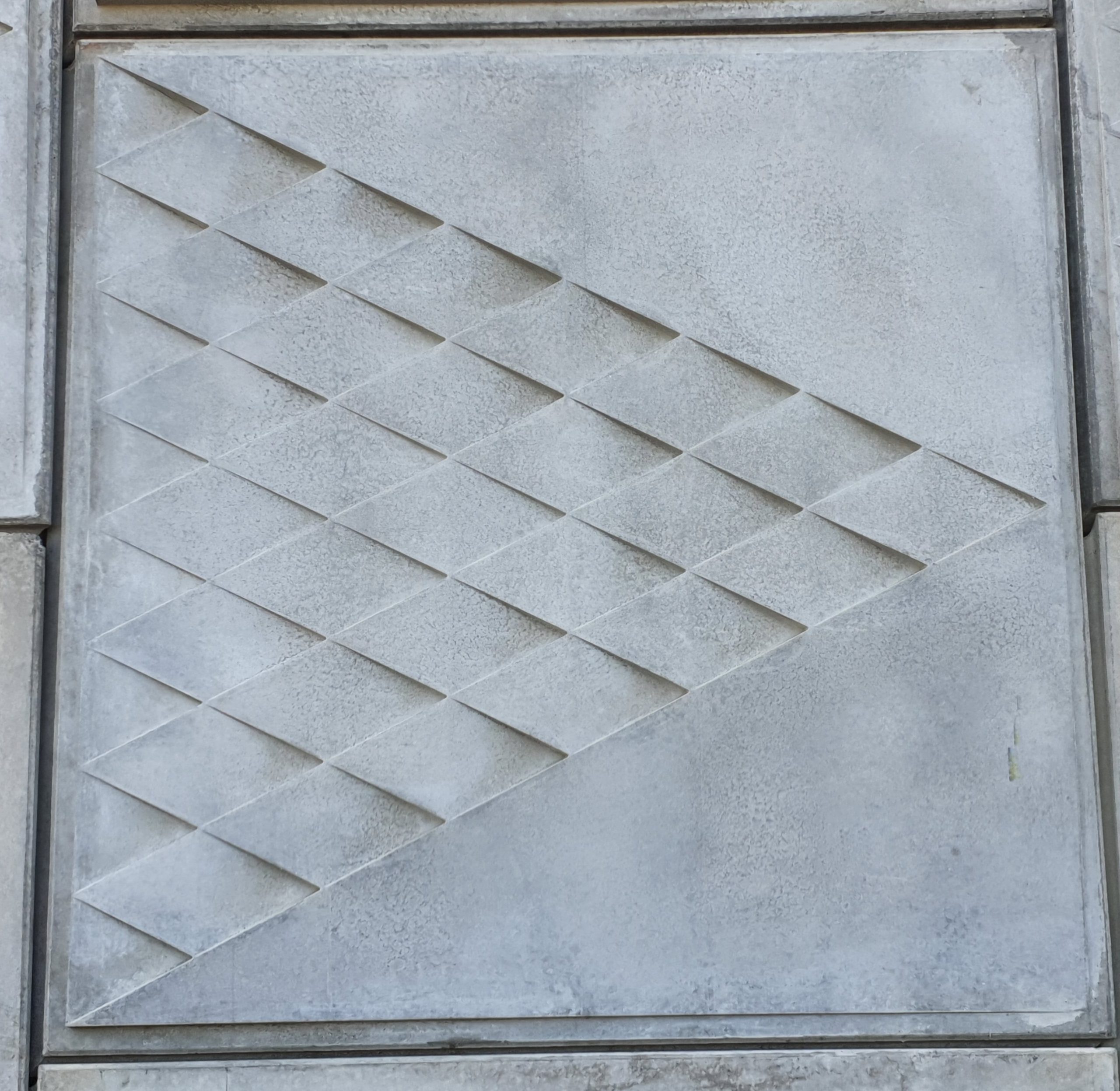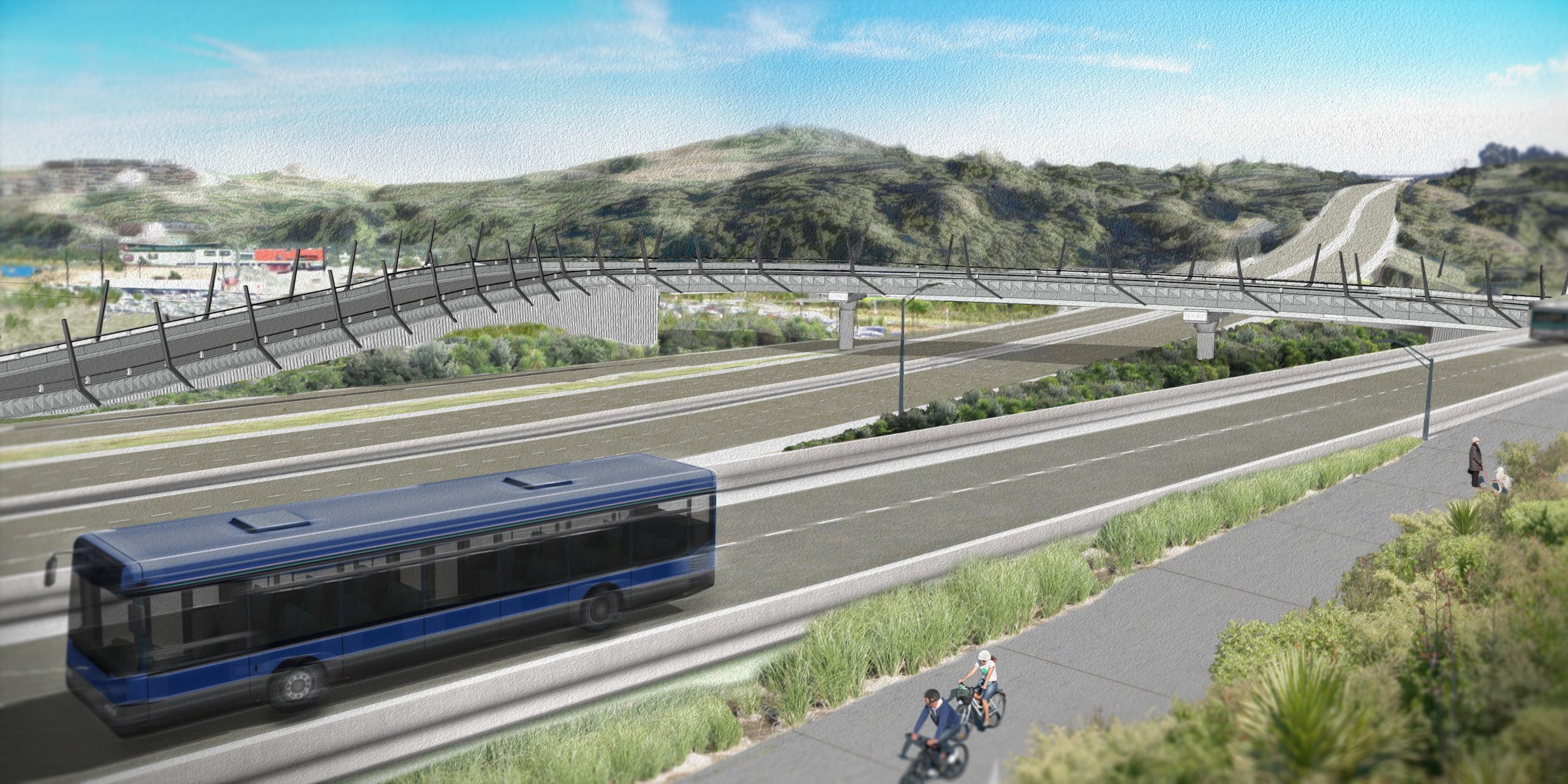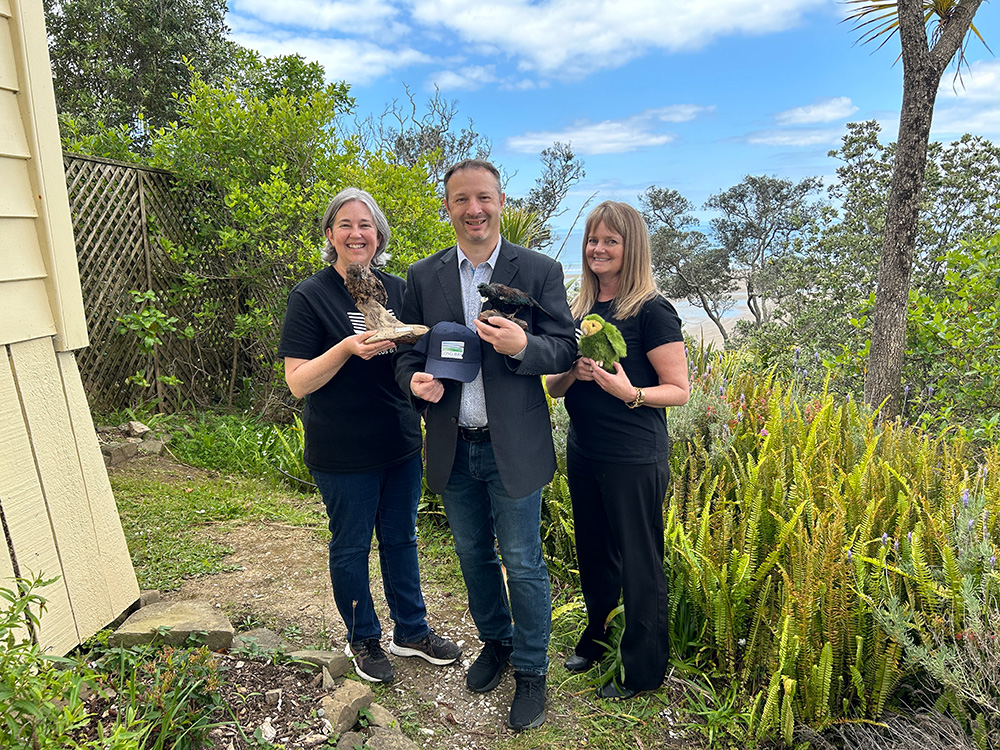At an estimated total cost of $700 million, Waka Kotahi NZ Transport Agency’s (NZTA’s) Northern Corridor Improvements (NCI) project promises to improve transport options on the North Shore for freight, cars, pedestrians and cyclists. It includes a new motorway connection between SH1 and SH18, opening up access to the Western Ring Route and airport. It will also deliver more than 7kms of walking and cycling paths and a wide range of local road and park connections. Covid-19 has disrupted the originally planned completion date by a few months, shifting this back to the end of 2022.

Patiki Design
Significant changes at Paul Matthews Road junction
There has been a major implementation for drivers travelling on SH18, as a new eastbound off-ramp at Paul Matthews Road opened recently.
The biggest difference is that drivers must turn right at the traffic lights on the off-ramp to head to Unsworth Heights, the SH1 motorway at Constellation Drive, or to continue travel to the East Coast Bays.
“This is a significant change to how people move around, and as expected, we have seen queues on the off-ramp during the morning peak as everyone gets used to the new road layout,” says NZTA’s Andy Thackwray.
“We’re advising that delays during peak hours will likely continue while people adjust to these changes, and we’re asking people to plan ahead and allow extra time to travel.”
NZTA is monitoring the traffic signals and queues at the intersection in real time and says it will be adjusting the signal phases to help improve traffic flows if required.
While the new road layout is permanent, the number of vehicles using this off-ramp will reduce when the northbound connection between SH18 and SH1 opens in late 2022.

Light poles installed on the Albany Busway Bridge
The urban design for this project looks to the ancestral use of the wider area for safe passage and harvesting kai (food), whether by ara (tracks) or awa (water). Design elements of the bridges, bridge barriers and retaining wall panels provide travellers with a connection to the cultural and ancestral landscape of the area.
For people travelling from the north, the new Albany Busway Bridge is the first distinctive landmark of the project and references the movement of a waka (canoe) through water. The light poles which have just been installed are positioned to be reminiscent of hoe (paddle) stroking through water from a waka.
A switch-on date for the lights is not yet confirmed, but it will be later this year.
Ancestors inspire design
New walls and bridges include some attractive design elements. These have been inspired by the ancestral use of the wider area for safe passage and harvesting kai (food), whether by ara (tracks) or awa (water).
Design elements of the bridges, bridge barriers and retaining wall panels take the modern day traveller on a journey by foot, bicycle, bus or car and reconnect them to the ancestral landscape and Māori tradition.
Some design elements have been built and are visible as you travel on the SH1 Northern Motorway, with the remainder scheduled to be completed over the next 16 months. There are two different panel designs which feature on the concrete retaining walls:
Taenga (arrival) representing the north/south arrival into Tāmaki Makaurau (Auckland). The panel design on the Albany Busway Bridge retaining wall is known as the pātiki design. It has been used to represent the different types of kai caught and transported by waka (canoe). Pātiki designs are based on the diamond shape of the flounder fish.
Nga Hau e Wha (navigation) shows wayfinding and orientation by star formations. The panel design on the Constellation Busway Bridge retaining walls shows the Tukemata/whatu (eyebrow/eye) design and is a tribute to Matariki. Matariki literally translates as the “eye of the gods” and is also the Māori name for the Pleiades star cluster which appears in the sky at the start of the Māori New Year.
To keep up-to-date with the NCI project, subscribe to the newsletter at nzta.govt.nz/projects/the-western-ring-route/auckland-northern-corridor






